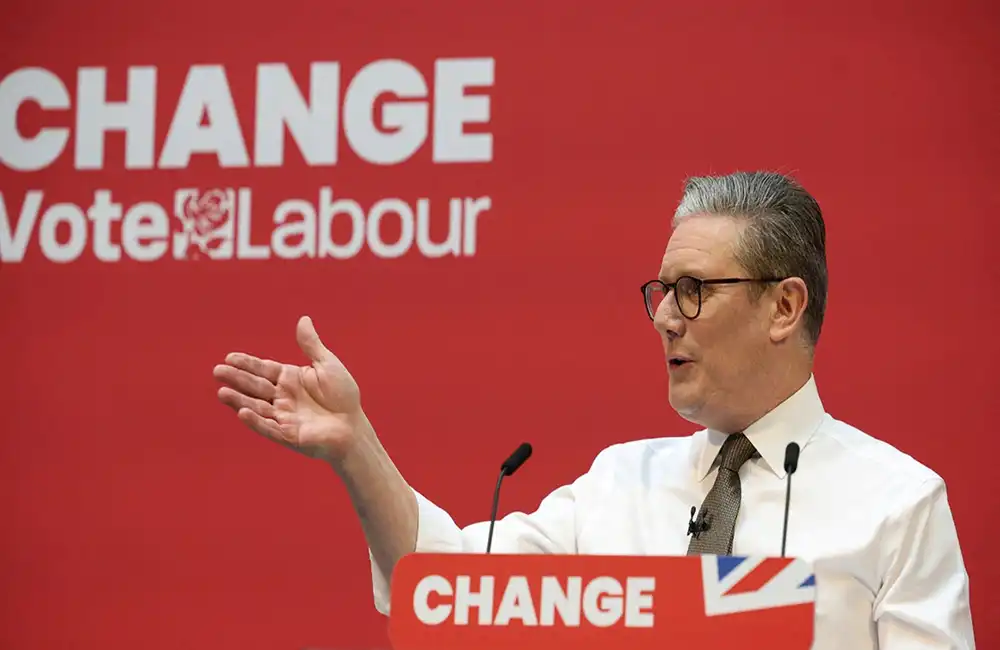As CEO Mike Henry nears the end of his term with BHP Group one of the largest mining companies worldwide prepares to undergo an essential leadership transition.
The succession phase presents a crucial opportunity for the company as upcoming leaders will determine its future strategic path and international market standing. Our analysis examines BHP’s succession strategy while evaluating potential leadership candidates and analysing possible outcomes for investors.
Leadership Transition Overview
Incoming Chairman Ross McEwan will oversee the process of finding BHP's new CEO. McEwan's leadership experience qualifies him to guide this essential process with stability. The transition maintains unbroken progress for BHP’s strategic plans as market conditions continue to evolve quickly.
Since his leadership began in January 2020 Mike Henry has earned praise for refining BHP’s portfolio and directing its investment towards long-lasting, high-yield assets such as copper, potash, and nickel. The new CEO will benefit from a solid foundation but will have to manage the challenges posed by fluctuating commodity prices and global decarbonisation efforts alongside geopolitical complexities.
Company insiders state that the succession planning process seeks to find a leader who can advance BHP towards becoming a sustainable and highly profitable mining giant.
Internal Candidates for Leadership
BHP’s track record of internal promotions makes multiple internal executives strong candidates for the CEO role.
Geraldine Slattery (Head of Australian Mines)
BHP's Australian operations depend heavily on Slattery's management of their profitable iron ore assets in Western Australia. Her expertise in operations and direct leadership style makes her a top choice for the role.
Vandita Pant (Chief Financial Officer)
Vandita Pant’s financial expertise and strategic vision have played a crucial role in strengthening BHP’s financial standing. Her leadership of major strategic projects including portfolio optimisation means that her placement would support BHP’s financial and sustainability targets.
Ragnar Udd (Head of the Commercial Team)
Udd combines extensive commercial expertise with profound understanding of global market dynamics. His expertise in commercial operations and stakeholder relationship management makes him an excellent candidate to lead BHP toward its strategic long-term goals.
Consideration of External Candidates
BHP typically prefers internal leaders yet remains open to potential external candidates. An outsider with new insights might be recruited by the company to tackle the mining sector's complex challenges like technological progressions and geopolitical changes while the company operates on a massive scale.
Hiring from outside the organisation demonstrates a decisive move to expand the company's expertise beyond its established talent base. This strategy would respond to investor demands for executives who demonstrate strong ESG credentials with successful experience in transformational leadership.
Strategic Context for the Succession Process
BHP’s succession planning matches its current strategic goals which emphasise the importance of critical minerals required for energy transition including copper and nickel. The company is moving forward with production scale-up plans at key projects including its Jansen potash operation located in Canada.
BHP must ensure a seamless leadership change to sustain its progress and establish itself as a major supplier of essential materials for a sustainable future.
Investor Implications
BHP’s CEO succession process creates investor uncertainty but presents a chance to bolster trust in company governance and operational continuity. Stakeholders will likely feel reassured by the company’s transparent and proactive management of leadership changes because Chairman Ross McEwan possesses a notable track record in navigating complex organisational transformations.
How the market responds to the new appointment will primarily depend on both the credibility and vision demonstrated by the chosen candidate. Selecting an internal candidate for leadership could demonstrate organisational stability which might help maintain investor confidence. An external candidate who delivers a distinctive value proposition might boost investor sentiment but could also lead to immediate market fluctuations.
Investors will monitor the new CEO's strategic approaches to capital allocation, carbon reduction efforts and geopolitical risk management. To sustain BHP’s strong market value and growth path an explicit vision for priority areas remains essential.
Final Thoughts
BHP’s succession strategy extends beyond leadership change to ensure the company's durability in a competitive market landscape that continues to evolve. BHP's established succession framework combined with its qualified candidate pool positions the company to reinforce its strategic vision through this leadership transition.
This process demonstrates to investors that BHP maintains a strong dedication to effective governance while ensuring business continuity and maximising shareholder value. The upcoming strategic decisions and leadership appointments will decide if the company can preserve its mining powerhouse status while developing solutions for upcoming challenges.
We will keep providing updates about this critical change in leadership while we observe BHP’s ongoing progress.



















